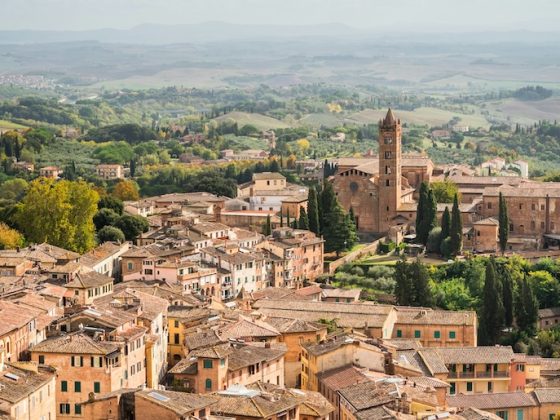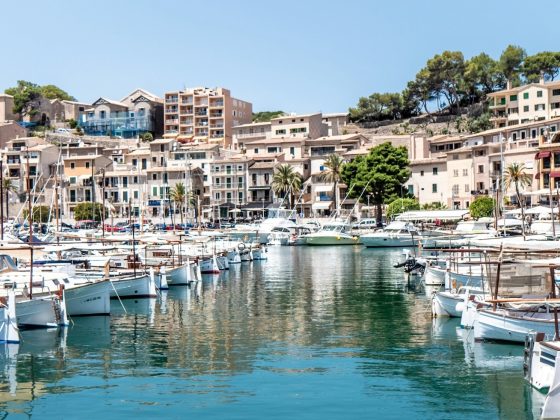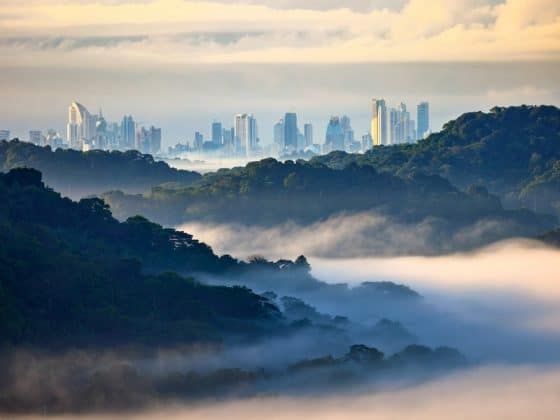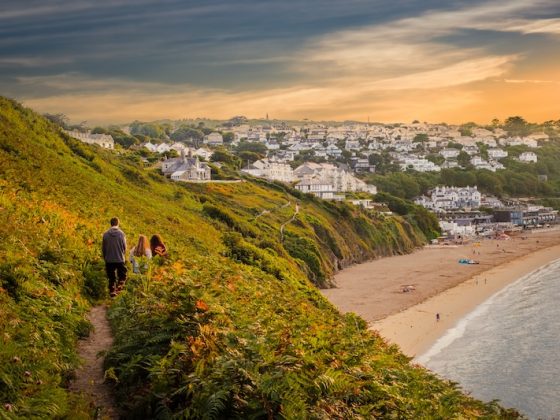Where Life Still Feels Budget-Friendly
Rising living costs around the world make the search for the cheapest place to live in Mexico feel more urgent. Prices have climbed sharply in major cities across Europe and North America, and many people now look for destinations that deliver stability, culture, and affordability all at once. Mexico offers warm weather, generous portions of leisure, and a cost of living that, in certain places, still feels grounded in reality.
Take one step into a local market. Stacks of fresh fruit sit beside bags of spices. A plate of street tacos costs less than a cup of coffee in many global capitals. Rental prices in most mid-sized Mexican cities remain below international averages. These details help explain why more remote workers, retirees, and long-term travelers choose Mexico each year.
But affordability alone does not make a city a good match for long-term living. This guide looks at low costs alongside stability, safety, healthcare access, walkable neighborhoods, and a welcoming environment for foreigners. You’ll find practical data, real comparisons, and city insights shaped by people who know the terrain. By the end, you will have a clear sense of which place aligns with your budget and lifestyle.
Why People Search for the Cheapest Place to Live in Mexico
The motivation behind the search reaches beyond saving a few pesos. Across much of the world, lifestyle costs rise faster than most people can adjust. Rent climbs, groceries stretch budgets, and small conveniences that once felt ordinary now demand careful planning. Mexico shifts that pattern. Essentials remain accessible, local markets keep daily food costs low, and many regions offer dependable infrastructure without the inflated price tags found elsewhere.
For retirees, this matters immediately. A fixed pension competes poorly with rising costs in North America or Europe, yet it supports a comfortable routine in cities like Mérida or Aguascalientes. Healthcare is within reach, cafés feel inviting instead of indulgent, and daily expenses do not pressure budgets.
Remote workers approach the equation from another angle. Earning in a strong currency while spending in pesos creates a cost-benefit balance that is difficult to find in many global hubs. Higher-quality housing, flexible work schedules in warmer climates, and access to coworking spaces all become more attainable.
Long-term travelers treat Mexico as a place where culture and affordability coexist. Learning regional traditions, exploring markets, or settling into a neighborhood for a few months becomes feasible without draining savings. Rising global costs make this combination powerful. It allows a richer experience while keeping financial plans intact.
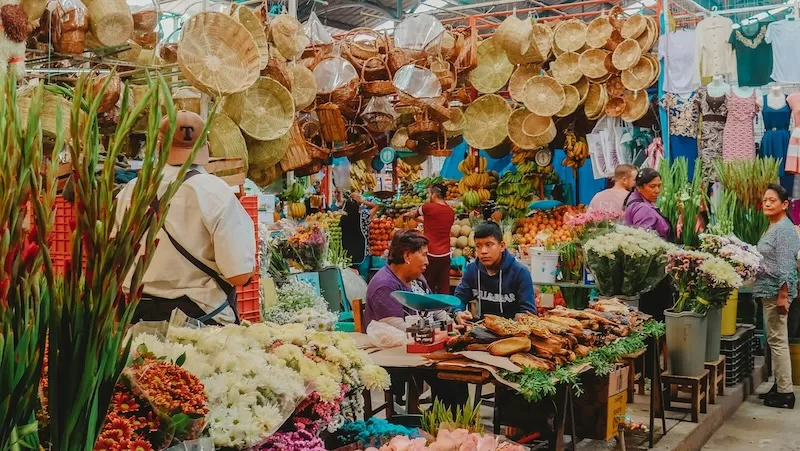
Search intent nearly always traces back to three points that shape real decision-making:
- A city that feels safe and financially manageable.
- Practical infrastructure, from housing to healthcare to reliable internet.
- A lifestyle that feels balanced, not bare-bones.
This guide is built around those priorities, offering realistic detail for anyone comparing their options.
Key Factors That Shape Affordability In Mexico
Understanding affordability requires looking beyond rent. Ordinary routines are shaped by the cost of transportation, food, healthcare, and utilities, and these elements work together to create a lifestyle that feels accessible without sacrificing wellbeing. Taking a closer look at each category gives a clearer picture of why so many people find Mexico appealing.
Housing
Housing sets the tone for most budgets, and in Mexico’s mid-sized cities this category delivers impressive value. A one-bedroom apartment in places like Mérida, Puebla, or Aguascalientes typically ranges from $415 to $585 per month. These prices often include features that feel luxurious elsewhere, such as shaded patios, small courtyards, or balconies overlooking quiet residential streets. Even apartments near historic centers stay within reach. Local wages keep the market stable, and that stability benefits anyone arriving with a foreign income or a fixed pension.
Transportation
Transportation costs also contribute to affordability in its more reasonable cities. A monthly public transit pass in cities such as Puebla sits around $20, giving residents access to reliable buses that cross the city throughout the day. Rideshare services remain widely used and far less expensive than their counterparts in the United States or Europe. Fuel prices tend to sit below international averages, which keeps driving from becoming a financial burden. This means mobility is not something people have to ration. Exploring neighborhoods, visiting markets, or commuting across town becomes part of the texture of life without stretching a budget.
Food And Markets
Food costs reveal one of Mexico’s biggest strengths. Food stalls overflow with fresh fruit, regional spices, herbs, and staples that anchor a month’s worth of meals at accessible prices. A simple lunch in a budget-friendly Mexican city usually falls between $9 and $11, often with handmade tortillas, fresh salsa, and a drink included. Monthly groceries commonly total $140 to $210, enough to cover fresh produce, proteins, pantry essentials, and ingredients for regional dishes that last several meals. Cooking at home remains easy and inexpensive, and eating out feels like a treat that does not require financial caution.

Healthcare
Healthcare rounds out the picture. Mexico’s private hospitals, especially in mid-sized cities, offer modern facilities staffed by specialists trained locally and abroad. Routine medical appointments typically cost $22 to $44, a fraction of what many people expect in North America. Prescription medications often carry lower price tags as well, and many treatments come without long waiting periods. This gives residents the freedom to prioritize health without worrying about surprise bills or excessive fees.
Together, these factors come together to form a cost-of-living structure that establishes a solid basis for comfort, stability, and everyday enjoyment. Housing stays within reach, transportation remains inexpensive, food prices encourage a healthy routine, and healthcare provides peace of mind without straining a budget.
The Cheapest Places to Live in Mexico
Affordability varies across Mexico, yet a few cities repeatedly rise to the top. Mérida, Aguascalientes, and Puebla form a reliable trio thanks to low monthly expenses, dependable infrastructure, and everyday comforts that are the basis for a stable, grounded lifestyle. Each city offers a different personality, but all three keep living costs within a range that feels manageable for retirees, remote workers, and long-term travelers.
Below is a cost comparison table using 2025 data from Numbeo and verified rental listings, with all prices shown in USD.
| City | Monthly Rent (1BR) | Monthly Cost of Living (Single Person) | Lifestyle Notes |
| Mérida | $415 to $470 | $850 to $980 | Safe, cultural, strong healthcare options |
| Aguascalientes | $380 to $435 | $820 to $940 | Quiet pace, efficient public services |
| Puebla | $495 to $560 | $900 to $1,010 | Historic center, cosmopolitan feel |
These ranges reflect typical living conditions in comfortable neighborhoods rather than luxury apartments, giving a realistic picture of what everyday life costs in Mexico’s most cost-conscious cities.
Read More Like This: 7 Best Cities to Live in Mexico for Safety, Cost, and Lifestyle
Why These Cities Remain So Affordable
Affordability in Mérida, Aguascalientes, and Puebla does not come from neglect or decline. It grows from structural factors that keep daily life accessible without reducing quality. Local wages anchor rental markets at realistic levels, which prevents the sharp price spikes seen in Mexico’s coastal tourist hubs. Coastal hotspots such as Tulum, Playa del Carmen, and Los Cabos operate on an international economy powered by foreign tourism and resort development. Housing costs climb, restaurant prices reflect visitor demand, and imported goods move through longer supply chains. Even inland icons like Mexico City and San Miguel de Allende command higher rates due to population pressure, prestige, and a steady influx of remote workers and retirees. By contrast, Mérida, Aguascalientes, and Puebla avoid these price drivers. Their economies grow through education, industry, healthcare, and regional commerce rather than tourism. This keeps costs tied to local reality instead of global trends, preserving the balance between attainable prices and comfort.
Food prices remain stable thanks to strong supply chains, especially in agricultural regions surrounding Aguascalientes and Puebla. Mid-sized cities also avoid the premium imposed by heavy international demand, allowing housing, transportation, and food to remain tied to community needs rather than visitor expectations. Strong regional supply chains keep market prices stable, and public infrastructure, from healthcare to public transit, continues to improve through state-level investment. The result is a cost of living that feels realistic, not inflated. Census-based studies indicate that internal migration in Mexico flows heavily toward a few high-growth metropolitan and coastal states, which pushes housing costs up there and leaves many mid-sized regional cities with gentler price pressure and more even rents. Together, these elements create a cost of living that reflects long-term stability rather than lack of investment. These cities stay reasonably priced because they function well, not because they lack value.
Let’s take a closer look at what makes these cities such strong overall options for budget-conscious expats and long-term residents.
Mérida: Culture, Safety, And Low Everyday Costs
Lifestyle Overview
Mérida frequently earns its reputation as one of the cheapest places to live in Mexico, but low prices tell only part of the story. Life in this Yucatán capital unfolds with a steady, warm beat. Colonial streets glow in late-afternoon sun, plazas fill with musicians and food vendors, and weekends bring artisan stalls, open-air dance events, and long café conversations. The atmosphere feels community-driven, and the city offers enough modern comfort to satisfy both long-term residents and remote workers. Safety-wise, Mérida consistently ranks among the safest urban areas in the country, thanks to visible policing, community programs, and a culture that values neighborhood participation. People walk in busy districts at night, and residential zones tend to stay quiet and orderly. This sense of security contributes to the city’s calm energy and is one of the main reasons retirees and remote workers choose Mérida over coastal alternatives.
Transport And Infrastructure
Mérida’s infrastructure helps routines run smoothly. Public transit covers the main corridors, taxis remain budget-friendly, and rideshare services are common. The city has a reputation for strong private healthcare, with hospitals such as Star Médica and Clínica de Mérida known for modern facilities and bilingual specialists. Internet speeds typically sit between 70 and 100 Mbps, which supports remote work, video calls, and heavy digital tasks. Power outages can occur during storms, but services generally return quickly.
Housing
A one-bedroom apartment in a comfortable neighborhood usually falls between $415 and $470 per month. Properties often include balconies, courtyards, or shaded outdoor areas that help offset the tropical heat. Many restored colonial homes also come with high ceilings and tiled floors that keep interiors cool.
Food Scene
Mérida’s food culture blends Yucatecan tradition with an expanding café scene. Markets such as Lucas de Gálvez offer inexpensive produce, spices, and local dishes. A simple market meal usually costs $5 to $8, and groceries for a month typically total $140 to $210. Street food remains a highlight, with salbutes, panuchos, and cochinita pibil available for pocket-friendly prices.
Typical Monthly Budget In Mérida
- Rent: $415 to $470
- Food: $140 to $210
- Transport: $35 to $45
- Healthcare and insurance: $60 to $120
- Utilities and internet: $60 to $75
Total: $710 to $920 for a single person
Best For
Retirees seeking safety and healthcare access, remote workers wanting reliable WiFi, and long-term travelers drawn to culture, warm weather, and community life.
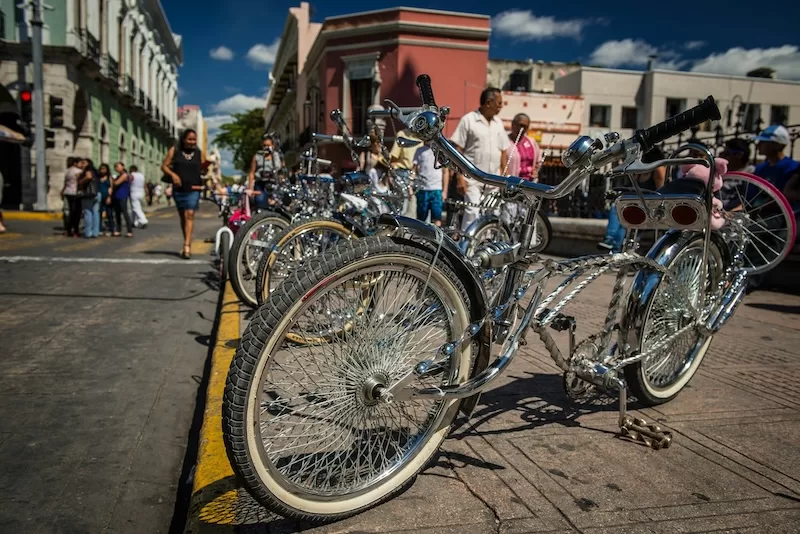
Aguascalientes: Mexico’s Powerhouse of Affordability
Lifestyle Overview
Aguascalientes offers a calm, organized lifestyle that surprises many newcomers. It lacks the coastal glamour found in other regions, yet replaces it with broad plazas, clean streets, shaded parks, and a pace that feels naturally unhurried. The city is known for its polite atmosphere, efficient services, and a sense of organization. The city maintains low violent crime rates, supported by its strong industrial economy and well-funded local services. Neighborhoods tend to feel orderly, with regular patrols and well-lit streets in the residential zones favored by expats.
Transport And Infrastructure
Transport is simple and inexpensive. Buses run regular routes through the city, and rideshare services cover nearly all neighborhoods. Healthcare here is strong, rooted in well-regarded private hospitals such as Hospital Hidalgo and Star Médica. Internet speeds generally fall between 50 and 100 Mbps, suitable for remote work and streaming. Roads are well maintained, a benefit of the city’s industrial and manufacturing economy.
Housing
Aguascalientes provides some of the lowest rental prices among Mexico’s safer mid-sized cities. One-bedroom apartments typically range from $380 to $435, depending on proximity to shopping districts and universities. Neighborhoods remain walkable, and most residential zones feel quiet and neatly arranged.
Food Scene
Markets supply fresh produce, chiles, cheeses, and regional dishes at accessible prices. A casual restaurant meal often costs $5 to $7, while monthly groceries fall between $130 and $200. The city is not as culinary-famous as Oaxaca or Puebla, yet it offers hearty regional food and plenty of family-run eateries.
Typical Monthly Budget In Aguascalientes
- Rent: $380 to $435
- Food: $130 to $200
- Transport: $25 to $40
- Healthcare and insurance: $50 to $100
- Utilities and internet: $55 to $70
Total: $640 to $845 for a single person
Best For
People who want stability, low noise levels, reliable infrastructure, and the lowest rent among Mexico’s safe, modern cities.

Puebla: Reasonably Priced Urban Life with a Historic Center
Lifestyle Overview
Puebla offers a richer urban feel than Mérida or Aguascalientes. Its historic center bursts with detailed architecture, tiled facades, and wide avenues. The city merges tradition with modernity through universities, coworking cafés, gastronomy, and a youthful student energy. The historic center stays busy throughout the day, thanks to a strong police presence, active community groups, and well-trafficked public areas. Residential neighborhoods in the north and near major universities tend to remain steady and peaceful, with a familiar routine of students, families, and office workers moving through predictable patterns. As with any large urban area, conditions vary by district, though most expat-focused neighborhoods maintain a sense of normalcy and day-to-day safety that supports long-term living. Days carry more movement and variety, but prices stay grounded, creating a great mix of culture and cost-consciousness.
Transport And Infrastructure
Public transport is extensive and inexpensive. A monthly bus pass averages $19 and rideshare services operate throughout the city. Healthcare access is strong, with reputable private hospitals and specialty clinics serving the region. Internet speeds commonly reach 70 to 120 Mbps, especially in districts favored by students and remote workers. Infrastructure varies slightly by neighborhood, yet central and northern zones tend to offer the most reliability.
Housing
Puebla’s large student population fuels a consistent rental market. A one-bedroom apartment usually costs $495 to $560, with many modern options near universities and shopping complexes. Colonial buildings in the historic center offer character at similar price points, though amenities vary.
Food Scene
Puebla is one of Mexico’s culinary capitals. Mole poblano, cemitas, tlacoyos, and traditional sweets fill street food stands and family-run restaurants. A casual meal usually ranges from $6 to $9, and monthly groceries tend to land between $150 and $220. Puebla’s café culture is also strong, with new spots opening frequently.
Typical Monthly Budget In Puebla
- Rent: $495 to $560
- Food: $150 to $220
- Transport: $19 to $35
- Healthcare and insurance: $60 to $120
- Utilities and internet: $60 to $80
Total: $785 to $1,015 for a single person
Best For
People who want big-city energy without big-city prices, food lovers interested in regional cuisine, and remote workers who prefer a lively environment with strong artistic offerings.
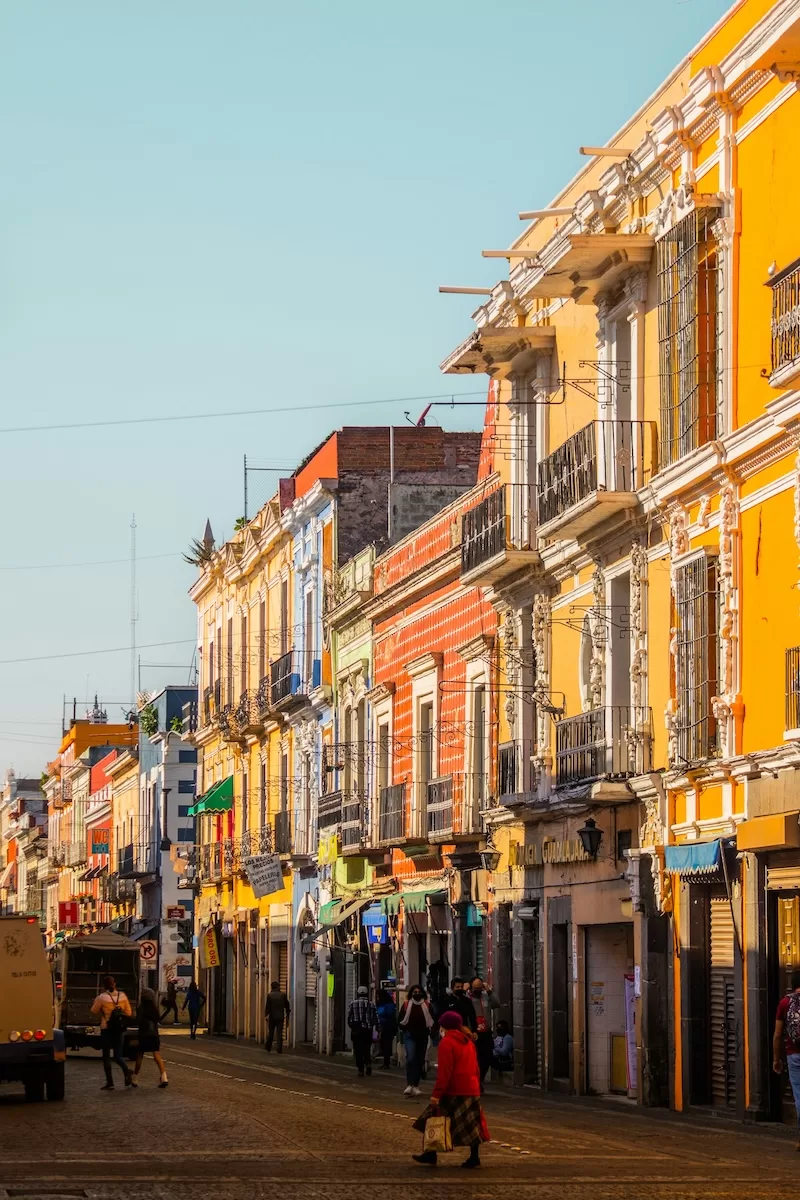
Read More Like This: Moving to Mexico? Consider Puebla
Other Affordable Cities in Mexico Worth Considering
Mexico has several cities that maintain a realistic cost of living while offering distinct character and solid everyday wellbeing. They may not always take the top spot, yet they remain firmly within the budget-friendly range for long-term residents.
Campeche
Campeche is kind of a coastal secret. Its pastel historic center, calm waterfront, and low tourist volume keep the city accessible. Accommodation expenses remain steady, seafood stalls keep grocery bills modest, and days are gently shaped by evening walks along the malecón and quiet residential streets. For people who want coastal living without resort-driven prices, Campeche presents one of Mexico’s most overlooked values.
Oaxaca City
Oaxaca City blends relatively low costs with cultural depth. It is known for its markets, artisan communities, regional cuisine, and festivals that anchor the calendar year. Living costs trend slightly above Mérida but remain below Mexico City and Guadalajara. Courtyard homes, compact apartments, and walkable neighborhoods create a lifestyle modeled by local flavors and creative energy. People who value culture, community, and slower mornings in cafés often gravitate here.
San Cristóbal de las Casas (Chiapas)
San Cristóbal delivers one of the lowest overall costs of living in the country, paired with a cooler highland climate and a vivid cultural landscape. Streets are lined with tiled roofs, artisan shops, and stalls filled with fresh produce from surrounding mountain communities. Rent stays affordable, food prices remain modest, and the city has a strong café and creative scene shaped by students, artists, and international volunteers. Life feels rooted and communal, with a vibe that invites reflective living and long-term budgeting.
Real Cost of Living in Mexico: Data You Can Trust
These numbers reflect the cost of living in Mexico’s most affordable mid-sized cities, specifically Mérida, Aguascalientes, and Puebla. They represent comfortable living rather than bare-minimum budgeting. All estimates are pulled from 2025 cost-of-living trackers, local rental markets, and regional economic data sources, expressed in USD for clarity.
Groceries
A month of groceries in these cities generally falls between $140 and $230. Fresh produce is abundant, markets keep prices reasonable, and staples such as beans, tortillas, eggs, and regional cheeses stretch a budget easily. Mérida and Aguascalientes tend to sit at the lower end of this range thanks to strong local supply chains, while Puebla can lean slightly higher due to its larger urban scale.
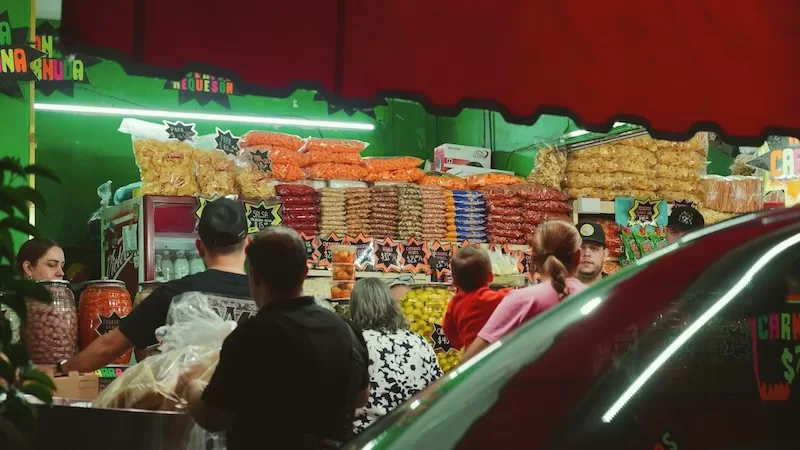
Utilities
Utilities for a modest one-bedroom apartment typically cost $50 to $80 per month across these cities.
Aguascalientes often lands on the lower side thanks to milder year-round temperatures. Mérida’s warm climate can nudge electricity bills upward during the hottest months, though many homes rely on ceiling fans and good ventilation rather than full-time air conditioning.
Internet
Fast, reliable internet in these cities usually costs $25 to $35 per month. Mérida and Puebla offer widespread fiber coverage in central and residential districts, while Aguascalientes maintains strong speeds due to its tech-forward infrastructure.
Healthcare
Routine private medical consultations typically cost $22 to $44. Mérida has some of the best-regarded private hospitals in southern Mexico, and prices there remain consistently inexpensive. Aguascalientes and Puebla mirror this range, with strong specialist networks and short wait times.
Monthly Budget Examples in Mexico’s Cheapest Cities
These budget ranges reflect life in Mérida, Aguascalientes, and Puebla, based on comfortable, stable living in safe neighborhoods.
- Single Person
A single resident typically spends $850 to $1,050 per month. This includes rent, groceries, transport, utilities, WiFi, healthcare, and occasional dining or leisure.
- Couple
A couple usually spends $1,350 to $1,850 per month. Shared housing keeps costs efficient, which is why a couple in these cities often spends the same as one person living alone in many parts of the U.S. or Canada.
How These Costs Compare To Expensive Mexican Cities
Contextualizing affordability becomes easier when we contrast and compare prices with Mexico’s high-demand destinations. Tourism economies, limited housing supply, and heavy foreign influence drive prices up sharply in some regions.
Here is what the same categories look like in well-known expensive hubs:
Mexico City
- Typical rent for a one-bedroom in safe, central neighborhoods: $900 to $1,450
- Monthly budget for a single person: $1,500 to $2,400
- Groceries can run 20 to 30 percent higher than Mérida or Aguascalientes.
San Miguel de Allende
- Rent for a one-bedroom: $850 to $1,600
- Groceries and dining are significantly inflated due to high expat demand.
- A monthly budget for a single person can land between $1,700 and $2,500.
Playa del Carmen / Tulum
- Rent in popular zones: $1,000 to $1,800
- Food and utilities often cost 40 to 60 percent more because of tourism-driven inflation.
- A single person often needs $1,900 to $2,800 per month to live comfortably.
Los Cabos
One of the most expensive areas in the country:
- Rent for a one-bedroom: $1,400 to $2,200
- Monthly costs easily exceed $2,500.
Why This Contrast Matters
These comparisons clarify why Mérida, Aguascalientes, and Puebla consistently rank as Mexico’s cheapest places to live. Their economies are shaped by local wages, regional commerce, stable housing supply, and limited foreign pricing pressure. That combination keeps daily life stable, accessible, and predictable, even as prices in more globalized cities rise year after year.
What $20 Gets You Today
Mérida
Twenty dollars stretches considerably. It covers a full market haul: a bag of limes, tomatoes, avocados, onions, a dozen tortillas, a small basket of mangos, fresh herbs, and enough chicken or pork for several meals. With money left over, you can add a fresh juice from a street stand and still sit down later for a plate of cochinita pibil with beans and handmade tortillas. That same amount pays for a cappuccino at a shaded café, a pastry, an hour in a coworking spot, or a shared lunch in the center.

Aguascalientes
In Aguascalientes, twenty dollars easily covers a full day of movement and meals. It pays for a round-trip rideshare across the city, a hearty menú del día with soup, a main dish, rice, beans, and a drink, and a stop at the bakery for sweet bread to take home. You can add a café visit with change to spare or pick up a week’s worth of vegetables, eggs, tortillas, and fruit from the neighborhood market. The money goes far enough that most residents treat small indulgences as part of the routine, not special occasions.
Puebla
Puebla’s mix of urban energy and stable prices makes twenty dollars feel flexible. It buys a plate of mole poblano, rice, and tortillas in a family-run restaurant, along with a café latte and a pastry near the university. It can also cover groceries for a few days: tomatoes, onions, greens, eggs, cheese, and tortillas. If you prefer exploring, that same amount handles public transport for the week and a fresh juice from a street stall near the zócalo. You end the day having spent less than you expected.
Campeche
Twenty dollars goes a long way in Campeche. It buys fresh fish from the waterfront market, plus vegetables, fruit, and tortillas for several home-cooked meals. You can still sit at a seaside café for a cold drink and enjoy the breeze along the malecón. For those who prefer eating out, the same amount covers a seafood lunch, a bus ride home, and a visit to a panadería for warm sweet bread.
Oaxaca City
In Oaxaca, twenty dollars turns into variety. It can pay for a tlayuda loaded with cheese and vegetables, a cup of hot chocolate made with stone-ground cacao, and a few purchases from the market such as tomatoes, onions, herbs, and seasonal fruit. If coffee is your comfort, that same amount buys two drinks at a specialty café, a pastry, and a short taxi ride back home. Artisans in the local markets also offer handwoven textiles and pottery pieces within this price range, giving the money cultural reach as well as practical value.
San Cristóbal de las Casas
In San Cristóbal, twenty dollars carries the softness of highland life. It covers a long breakfast of eggs, beans, tortillas, and coffee, plus a bag of mountain-grown fruit and vegetables from the market. It pays for a warm drink in a wooden café as mist rolls down from the hills. With careful shopping, it also buys a week of bus rides through the city and enough pantry staples to last several meals at home.
What Life Feels Like In Mexico’s Most Affordable Cities
Numbers tell one part of the story. Lifestyle tells the rest.
The texture of these places reveals itself step by step, through moments that cost little but feel full. In these cheaper cities, mornings take shape long before the day gathers speed. Small tortillerías open their doors, filling entire blocks with the warm scent of corn. Street vendors set up griddles, slicing fruit into cups of papaya, melon, and lime. The calm before traffic builds is part of the vibe here. It creates a serenity that is rare in larger capitals.
In these cities, life runs on small routines. Aguascalientes wakes early. People walk to work along clean avenues, and the sound of sweeping brooms echoes from storefronts opening for the day. Puebla moves with more momentum, especially near the historic center. Bells from old churches mark the hours. Cafés fill with students and office workers, laptops open, pastries disappearing fast. Mérida carries the weight of heat, yet mornings feel cool enough to stroll shaded streets lined with flamboyán trees and pastel façades.
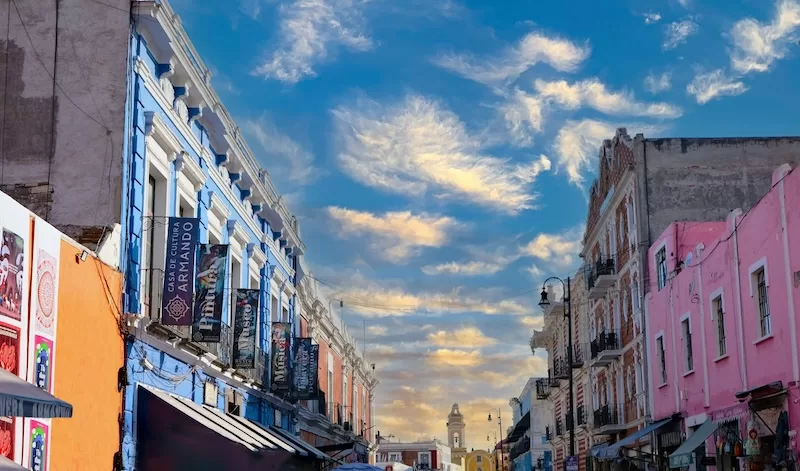
Markets anchor life in reasonably priced Mexican cities. They are places where daily budgets stretch quite a bit, and community feels tangible. In Oaxaca City, vendors arrange piles of chiles, herbs, and chocolate at dawn. In Campeche, fishermen bring in the day’s catch, loading it onto ice before locals arrive. In San Cristóbal, mountain produce arrives in woven baskets, still smelling of damp earth. Shopping does not feel like a chore. It feels like a connection to the place itself.
Afternoons unfold differently depending on the region. In Mérida, people take refuge from the heat in cool courtyards, tiled floors lowering the temperature naturally. Aguascalientes enjoys dry, mild weather, so parks stay busy with joggers, chess players, and families sharing snacks under the shade. Puebla’s wide avenues carry a lively energy through the afternoon. Street musicians take up corners near the zócalo, and university crowds drift through bookshops and bakeries.
Evenings are where many of these cities come alive. In Mérida, plazas glow with string lights. Couples dance to live trova music. Children chase each other in open squares, and street food stalls begin their steady trade. In Oaxaca, the smell of grilled tlayudas, toasted corn, and chocolate fills the air. San Cristóbal cools quickly after sunset, leading people toward dim cafés with wooden tables and mountain tea. Campeche’s malecón draws walkers who stroll along the waterfront, watching fishing boats return in the fading light.
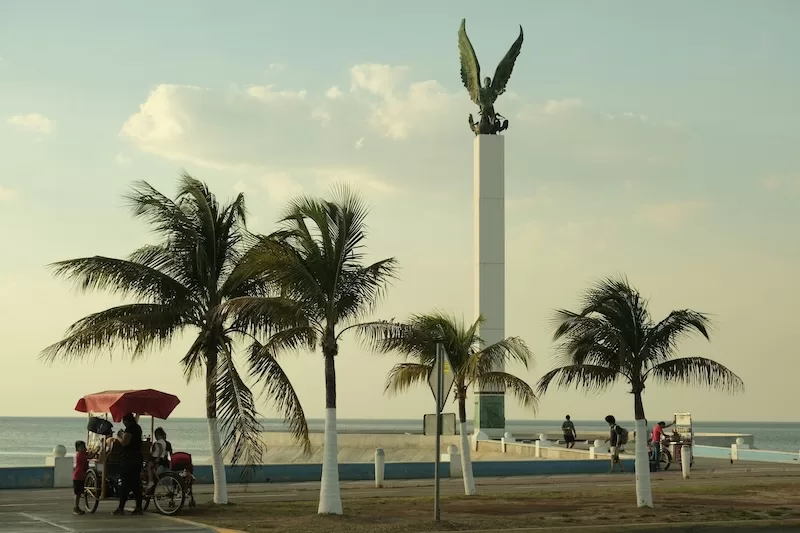
Life in these cities is practical and beautiful because costs allow for breathing room. People spend time in places that feel open, accessible, and communal. A café visit does not require planning. A fresh meal from a market vendor is not a splurge. Public spaces are used constantly, from plazas to tree-lined parks to coastal walkways. This daily accessibility shapes a freedom that has nothing to do with extravagance.
Affordability here does not mean compromise. It builds an environment that lets life expand in meaningful ways. A relaxed morning. A second coffee. A walk through a market just to see what arrived that day. That is what life feels like in Mexico’s most modestly priced cities.
FAQs
Q1. Is Mexico safe for expats on a budget?
Safety varies across the country, but several of Mexico’s most affordable cities maintain steady, low-risk environments. Mérida consistently ranks as one of the safest cities in the country with strong community programs, visible policing, and neighborhoods that stay active well into the evening. Aguascalientes follows closely, supported by an orderly city layout and a population known for calm, predictable routines. Puebla’s northern districts and university zones also offer stable, day-to-day safety. These cities are all about evening walks, open plazas, and community gatherings that shape a reassuring atmosphere for long-term residents.
Q2. How much money do you need to live comfortably in Mexico’s cheapest cities?
Living comfortably in Mérida, Aguascalientes, or Puebla typically costs $850 to $1,050 per month for a single person. This covers rent in a one-bedroom apartment, groceries, transport, healthcare, and regular meals out. A couple usually spends $1,350 to $1,850, thanks to shared housing and utility costs. These ranges reflect a lifestyle with room for leisure, cafés, markets, and cultural outings, not a bare-minimum approach.
Q3. Can foreigners rent easily in these reasonably priced cities?
Yes. Renting as a foreigner is straightforward in most budget-friendly Mexican cities. Mérida, Puebla, and Aguascalientes have active rental markets with abundant listings ranging from modern apartments to older courtyard-style homes. Deposits usually equal one month of rent, and many landlords accept standard passport identification in place of a local credit history. In university cities like Puebla and Oaxaca, furnished rentals are particularly common, giving newcomers an easier landing.
Q4. What is the cheapest coastal city for long-term living?
Campeche stands out as one of the most affordable coastal cities in Mexico. It avoids the tourism-driven inflation found in Playa del Carmen, Tulum, or Los Cabos. Rent remains grounded, seafood markets keep daily costs modest, and the historic center offers peaceful living near the waterfront. The city’s low tourism volume helps preserve realistic prices for housing, groceries, and dining. Budget-minded coastal living is difficult to find elsewhere without sacrificing safety or infrastructure.
Q5. Which city suits remote workers best?
Mérida offers the strongest overall ecosystem for remote workers among Mexico’s cheapest cities. Internet speeds often sit between 70 and 100 Mbps, coworking spaces remain abundant in central neighborhoods, and cafés throughout the city provide reliable WiFi. Aguascalientes also suits remote workers who prefer calmer surroundings, with stable internet and an organized city layout that keeps commutes short. For creatives who value culture and inspiration, Oaxaca City provides a lively café scene and a slower pace that helps make long work sessions more bearable.
Q6. Are affordable cities well-connected to the rest of Mexico?
Yes. Puebla has one of the best-connected bus terminals in the country, offering frequent routes to Mexico City, Veracruz, and Oaxaca. Mérida’s international airport provides flights to major Mexican hubs and select U.S. cities. Aguascalientes sits on a major rail and highway corridor, making travel to Guadalajara, León, and Querétaro straightforward. These cities keep travel practical without expensive routes or long detours.
Q7. Do these cities offer good healthcare options?
They do. Mérida is known for its strong private hospitals and bilingual specialists, which draws medical tourism from across the region. Puebla hosts several teaching hospitals and specialist clinics. Aguascalientes offers modern facilities with short wait times. Routine consultations in these cities cost $22 to $44, making it realistic to focus on preventive care rather than delay appointments because of price.
Q8. What are the biggest lifestyle differences between Mexico’s cheapest cities and expensive hubs like Mexico City or Tulum?
Ordinary routines in affordable cities feel slower and more stable. Markets stay accessible, public spaces remain central to local culture, and housing costs do not dominate monthly budgets. In expensive hubs, tourism and external demand push prices upward. A meal that costs $6 in Mérida may cost $15 or more in Playa del Carmen. A one-bedroom apartment that rents for $450 in Aguascalientes can reach $1,400 in central Mexico City. Budget-friendly cities give residents the freedom to enjoy cafés, markets, and parks as part of their day-to-day instead of treating them as occasional splurges.

Choosing A Life That Fits Your Budget
Selecting the cheapest place to live in Mexico is not just about trimming expenses. It is about opening space for a different kind of daily experience. In cities like Mérida, Aguascalientes, Puebla, Campeche, Oaxaca, and San Cristóbal, life goes on with a sense of ease that comes from knowing the essentials are accessible. Groceries come from people who know their growers. Healthcare is close by and attainable. Neighborhoods feel human in scale, built around produce halls, plazas, cafés, and streets where everyday moments still matter.
Affordability creates possibilities. It allows evenings that stretch into conversation, weekends shaped by discovery rather than cost, and mornings that start without pressure. When expenses stop crowding the edges of your life, you gain room to imagine what your days could look like, not only what they must cover.
Choosing a Mexican city that’s easy on the wallet means choosing surroundings that support steadiness and comfort. It offers the chance to build a lifestyle that feels sustainable, grounded, and generous in its small details.
If this sparked ideas for your next chapter, consider signing up for our newsletter. It is where we highlight new cities, cost comparisons, and tools that help you make informed decisions.

